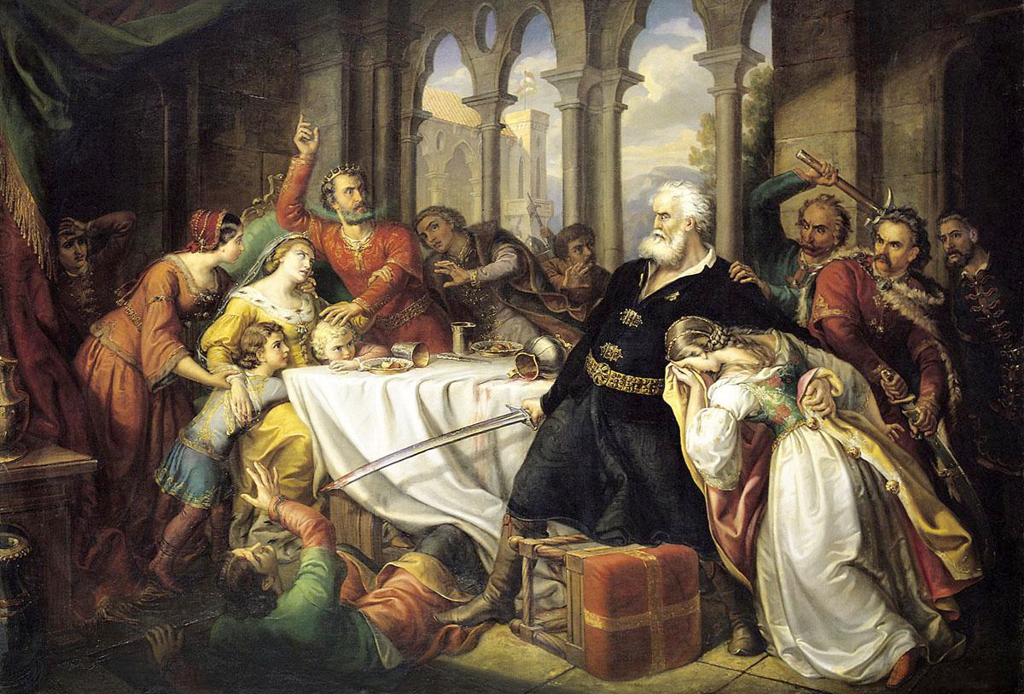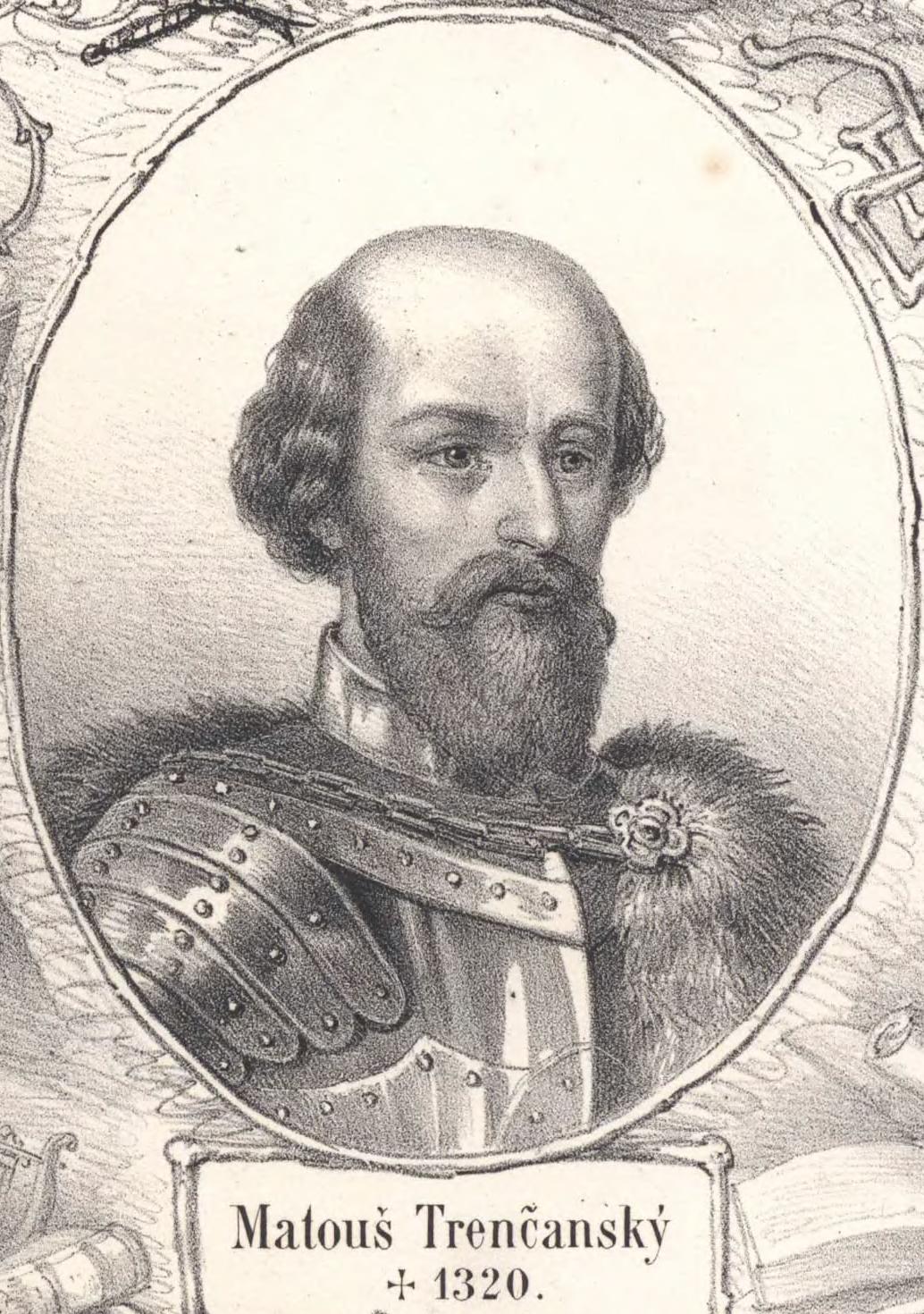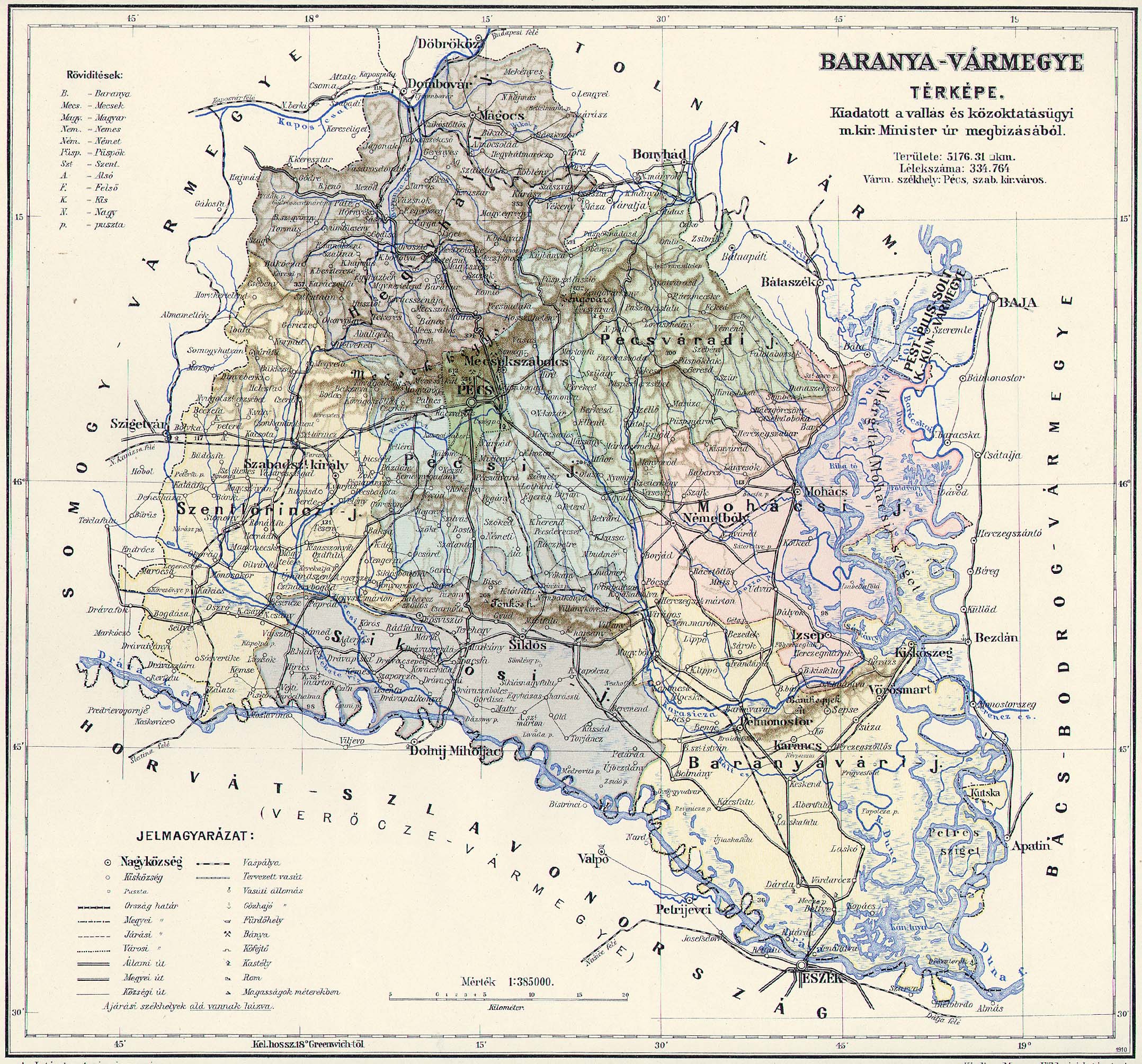|
Záh (gens)
Záh (''Zaah'' or ''Zách'') was the name of a ''gens'' (Latin for "clan"; ''nemzetség'' in Hungarian) in the Kingdom of Hungary. The clan was one of the 108 ''gentes'' during the Hungarian conquest of the Carpathian Basin and located in Nógrád County along with the Kacsics, Kartal, Kökényesradnót and Tomaj clans. The gens provided several high dignitaries in the era of Árpáds, including Nicholas, son of Borsa who served as ispán (Count; ''comes'') of Sopron County between 1221 and 1233. Conrad, son of Albős (c. 1240–1269) was ispán of Győr County and chief cellarer for the Queen. Job functioned as bishop of Pécs from 1252 until c. 1282 and ispán of Moson County since 1272. He was the uncle of Felician Záh. The clan divided into two branches: the first one had estates in Transdanubia, Tolna, Somogy and Baranya Counties. The second one remained landowner in Nógrád County. Felician belonged to the Nógrád branch. He was a supporter of Matthew Csák. Notab ... [...More Info...] [...Related Items...] OR: [Wikipedia] [Google] [Baidu] |
Kingdom Of Hungary
The Kingdom of Hungary was a monarchy in Central Europe that existed for nearly a millennium, from the Middle Ages into the 20th century. The Principality of Hungary emerged as a Christian kingdom upon the coronation of the first king Stephen I at Esztergom around the year 1000;Kristó Gyula – Barta János – Gergely Jenő: Magyarország története előidőktől 2000-ig (History of Hungary from the prehistory to 2000), Pannonica Kiadó, Budapest, 2002, , p. 687, pp. 37, pp. 113 ("Magyarország a 12. század második felére jelentős európai tényezővé, középhatalommá vált."/"By the 12th century Hungary became an important European factor, became a middle power.", "A Nyugat részévé vált Magyarország.../Hungary became part of the West"), pp. 616–644 his family (the Árpád dynasty) led the monarchy for 300 years. By the 12th century, the kingdom became a European middle power within the Western world. Due to the Ottoman occupation of the central and south ... [...More Info...] [...Related Items...] OR: [Wikipedia] [Google] [Baidu] |
Transdanubia
Transdanubia ( hu, Dunántúl; german: Transdanubien, hr, Prekodunavlje or ', sk, Zadunajsko :sk:Zadunajsko) is a traditional region of Hungary. It is also referred to as Hungarian Pannonia, or Pannonian Hungary. Administrative divisions Traditional interpretation The borders of Transdanubia are the Danube River (north and east), the Drava and Mura rivers (south), and the foothills of the Alps roughly along the border between Hungary and Austria (west). Transdanubia comprises the counties of Győr-Moson-Sopron, Komárom-Esztergom, Fejér, Veszprém, Vas, Zala, Somogy, Tolna, Baranya and the part of Pest that lies west of the Danube. (In the early Middle Ages the latter was known as Pilis county.) This article deals with Transdanubia in this geographical meaning. Territorial changes While the northern, eastern and southern borders of the region are clearly marked by the Danube and Drava rivers, the western border was always identical with the political boundary of ... [...More Info...] [...Related Items...] OR: [Wikipedia] [Google] [Baidu] |
King Of Poland
Poland was ruled at various times either by dukes and princes (10th to 14th centuries) or by kings (11th to 18th centuries). During the latter period, a tradition of free election of monarchs made it a uniquely electable position in Europe (16th to 18th centuries). The first known Polish ruler is Duke Mieszko I, who adopted Christianity under the authority of Rome in the year 966. He was succeeded by his son, Bolesław I the Brave, who greatly expanded the boundaries of the Polish state and ruled as the first king in 1025. The following centuries gave rise to the mighty Piast dynasty, consisting of both kings such as Mieszko II Lambert, Przemysł II or Władysław I the Elbow-high and dukes like Bolesław III Wrymouth. The dynasty ceased to exist with the death of Casimir III the Great in 1370. In the same year, the Capetian House of Anjou became the ruling house with Louis I as king of both Poland and Hungary. His daughter, Jadwiga, later married Jogaila, the pagan Grand Du ... [...More Info...] [...Related Items...] OR: [Wikipedia] [Google] [Baidu] |
Casimir III The Great
Casimir III the Great ( pl, Kazimierz III Wielki; 30 April 1310 – 5 November 1370) reigned as the King of Poland from 1333 to 1370. He also later became King of Ruthenia in 1340, and fought to retain the title in the Galicia-Volhynia Wars. He was the last Polish king from the Piast dynasty. Casimir inherited a kingdom weakened by war and made it prosperous and wealthy. He reformed the Polish army and doubled the size of the kingdom. He reformed the judicial system and introduced a legal code, gaining the title "the Polish Justinian". Casimir built extensively and founded the Jagiellonian University (back then simply called the University of Krakow),Saxton, 1851, p. 535 the oldest Polish university and one of the oldest in the world. He also confirmed privileges and protections previously granted to Jews and encouraged them to settle in Poland in great numbers. Casimir left no sons. When he died in 1370 from an injury received while hunting, his nephew, King Louis I of Hunga ... [...More Info...] [...Related Items...] OR: [Wikipedia] [Google] [Baidu] |
Andrew, Duke Of Calabria
Andrew, Duke of Calabria (30 October 1327 – 18 September 1345) was the first husband of Joanna I of Naples, and a son of Charles I of Hungary and brother of Louis I of Hungary. Background and engagement Andrew was the second of three surviving sons of King Charles I of Hungary and his third wife, Elizabeth of Poland. He was betrothed in 1334 to his cousin Joanna, granddaughter and heiress apparent of King Robert of Naples; Andrew's father was a fraternal nephew of King Robert, making Andrew and Joanna both members of the Capetian House of Anjou. Robert's claim to the throne was rather tenuous and did not follow primogeniture. Andrew's grandfather, Charles Martel of Anjou, had died young; therefore, the throne should have passed to Andrew's father. However, due to fears of impending invasion from Sicily, it was felt that a seven-year-old heir was too risky and would not be able to hold off invasions. The throne was offered to the next son of Charles II of Naples, Louis, but he ... [...More Info...] [...Related Items...] OR: [Wikipedia] [Google] [Baidu] |
Louis I Of Hungary
Louis I, also Louis the Great ( hu, Nagy Lajos; hr, Ludovik Veliki; sk, Ľudovít Veľký) or Louis the Hungarian ( pl, Ludwik Węgierski; 5 March 132610 September 1382), was King of Hungary and Croatia from 1342 and King of Poland from 1370. He was the first child of Charles I of Hungary and his wife, Elizabeth of Poland, to survive infancy. A 1338 treaty between his father and Casimir III of Poland, Louis's maternal uncle, confirmed Louis's right to inherit the Kingdom of Poland if his uncle died without a son. In exchange, Louis was obliged to assist his uncle to reoccupy the lands that Poland had lost in previous decades. He bore the title of Duke of Transylvania between 1339 and 1342 but did not administer the province. Louis was of age when he succeeded his father in 1342, but his deeply religious mother exerted a powerful influence on him. He inherited a centralized kingdom and a rich treasury from his father. During the first years of his reign, Louis launched a cru ... [...More Info...] [...Related Items...] OR: [Wikipedia] [Google] [Baidu] |
Elizabeth Of Poland, Queen Of Hungary
Elizabeth of Poland ( hu, Erzsébet, pl, Elżbieta; 1305 – 29 December 1380) was Queen of Hungary by marriage to Charles I of Hungary, and regent of Poland from 1370 to 1376 during the reign of her son Louis I. Life Early life She was a member of the Polish royal House of Piast, the daughter of Władysław I the Elbow-high, prince of Kujavia, later King of Poland, and Jadwiga of Greater Poland. She was the sister of Casimir III of Poland, who died in 1370. Her older sister was Cunigunde of Poland, who was married to Bernard of Świdnica. Queen consort She was married on 6 July 1320 to Charles I Robert, King of Hungary. Elizabeth was Charles' fourth wife. The marriage brought an alliance between Poland and Hungary. Charles' two previous marriages are believed not to have left surviving issue, at least no surviving sons. Charles' first wife Maria of Bytom was believed to have been barren but it is also believed she bore two daughters: Catherine and Elizabeth. Others howev ... [...More Info...] [...Related Items...] OR: [Wikipedia] [Google] [Baidu] |
Charles I Of Hungary
Charles I, also known as Charles Robert ( hu, Károly Róbert; hr, Karlo Robert; sk, Karol Róbert; 128816 July 1342) was King of Hungary and Croatia from 1308 to his death. He was a member of the Capetian House of Anjou and the only son of Charles Martel, Prince of Salerno. His father was the eldest son of Charles II of Naples and Mary of Hungary. Mary laid claim to Hungary after her brother, Ladislaus IV of Hungary, died in 1290, but the Hungarian prelates and lords elected her cousin, Andrew III, king. Instead of abandoning her claim to Hungary, she transferred it to her son, Charles Martel, and after his death in 1295, to her grandson, Charles. On the other hand, her husband, Charles II of Naples, made their third son, Robert, heir to the Kingdom of Naples, thus disinheriting Charles. Charles came to the Kingdom of Hungary upon the invitation of an influential Croatian lord, Paul Šubić, in August 1300. Andrew III died on 14 January 1301, and within four mon ... [...More Info...] [...Related Items...] OR: [Wikipedia] [Google] [Baidu] |
Visegrád
Visegrád (; german: Plintenburg; la, Pone Navata or ; sk, Vyšehrad) is a castle town in Pest County, Hungary. It is north of Budapest on the right bank of the Danube in the Danube Bend. It had a population of 1,864 in 2010. The town is the site of the remains of the Early Renaissance summer palace of King Matthias Corvinus of Hungary and a medieval citadel. Etymology The name ''Visegrád'' (''Vyšehrad'') is of Slavic origin, meaning acropolis, literary "the upper castle" (the castle with a privileged position) or "the upper settlement". In modern Slovak and Czech, the form is ''Vyšehrad''. The castle of Visegrád is called ''Fellegvár'' (Citadel) in Hungarian,Antal Papp: Magyarország (Hungary), Panoráma, Budapest, 1982, , p. 860, pp. 229-236 In German, the town is called ''Plintenburg''. The German name ''Plintenburg'' or ''Blendenburg'' is said to come from the beautiful view that one has from the castle and is "blinded"/"dazzled" by this view. History Visegrád was ... [...More Info...] [...Related Items...] OR: [Wikipedia] [Google] [Baidu] |
Bishop Of Pécs
A bishop is an ordained clergy member who is entrusted with a position of Episcopal polity, authority and oversight in a religious institution. In Christianity, bishops are normally responsible for the governance of dioceses. The role or office of bishop is called episcopacy. Organizationally, several Christian denominations utilize ecclesiastical structures that call for the position of bishops, while other denominations have dispensed with this office, seeing it as a symbol of power. Bishops have also exercised political authority. Traditionally, bishops claim apostolic succession, a direct historical lineage dating back to the original Twelve Apostles or Saint Paul. The bishops are by doctrine understood as those who possess the full Priest#Christianity, priesthood given by Jesus in Christianity, Jesus Christ, and therefore may ordain other clergy, including other bishops. A person ordained as a deacon, priest (i.e. presbyter), and then bishop is understood to hold the fulln ... [...More Info...] [...Related Items...] OR: [Wikipedia] [Google] [Baidu] |
Matthew III Csák
Máté Csák or Matthew III Csák (between 1260 and 1265 – 18 March 1321; hu, Csák (III.) Máté, sk, Matúš Čák III), also Máté Csák of Trencsén ( hu, trencséni Csák (III.) Máté, sk, Matúš Čák III Trenčiansky), was a Hungarian oligarch who ruled ''de facto'' independently the north-western counties of Medieval Hungary (today roughly the western half of present-day Slovakia and parts of Northern Hungary). He held the offices of master of the horse ''(főlovászmester)'' (1293–1296), palatine ''(nádor)'' (1296–1297, 1302–1309) and master of the treasury ''(tárnokmester)'' (1309–1311). He was able to maintain his rule over his territories even after his defeat at the Battle of Rozgony against King Charles I of Hungary. In the 19th century, he was often described as a symbol of the struggle for independence in both the Hungarian and Slovak literatures. Early years He was a son of the Palatine Peter I Csák, a member of the Hungarian ''genus'' ("cla ... [...More Info...] [...Related Items...] OR: [Wikipedia] [Google] [Baidu] |
Baranya County (former)
Baranya ( hu, Baranya, hr, Baranja, sr, Барања / ''Baranja'', ger, Branau) was an administrative county (comitatus) of the Kingdom of Hungary. Its territory is now divided between present-day Baranya County of Hungary and Osijek-Baranja County of Croatia. The capital of the county was Pécs. Geography Baranya county was located in Baranya region. It shared borders with the Hungarian counties Somogy, Tolna, Bács-Bodrog and Verőce (the latter county was part of Croatia-Slavonia). The county stretched along the rivers Drava (north bank) and Danube (west bank), up to their confluence. Its area was 5,176 km2 around 1910. Historical background Baranya county arose as one of the first counties of the Kingdom of Hungary, in the 11th century. Stephen I of Hungary founded an episcopal seat here. In the 15th century, Janus Pannonius was the Bishop of Pécs. In the 16th century, the Ottoman Empire conquered Baranya, and included it into the sanjak of Mohács, an Otto ... [...More Info...] [...Related Items...] OR: [Wikipedia] [Google] [Baidu] |










